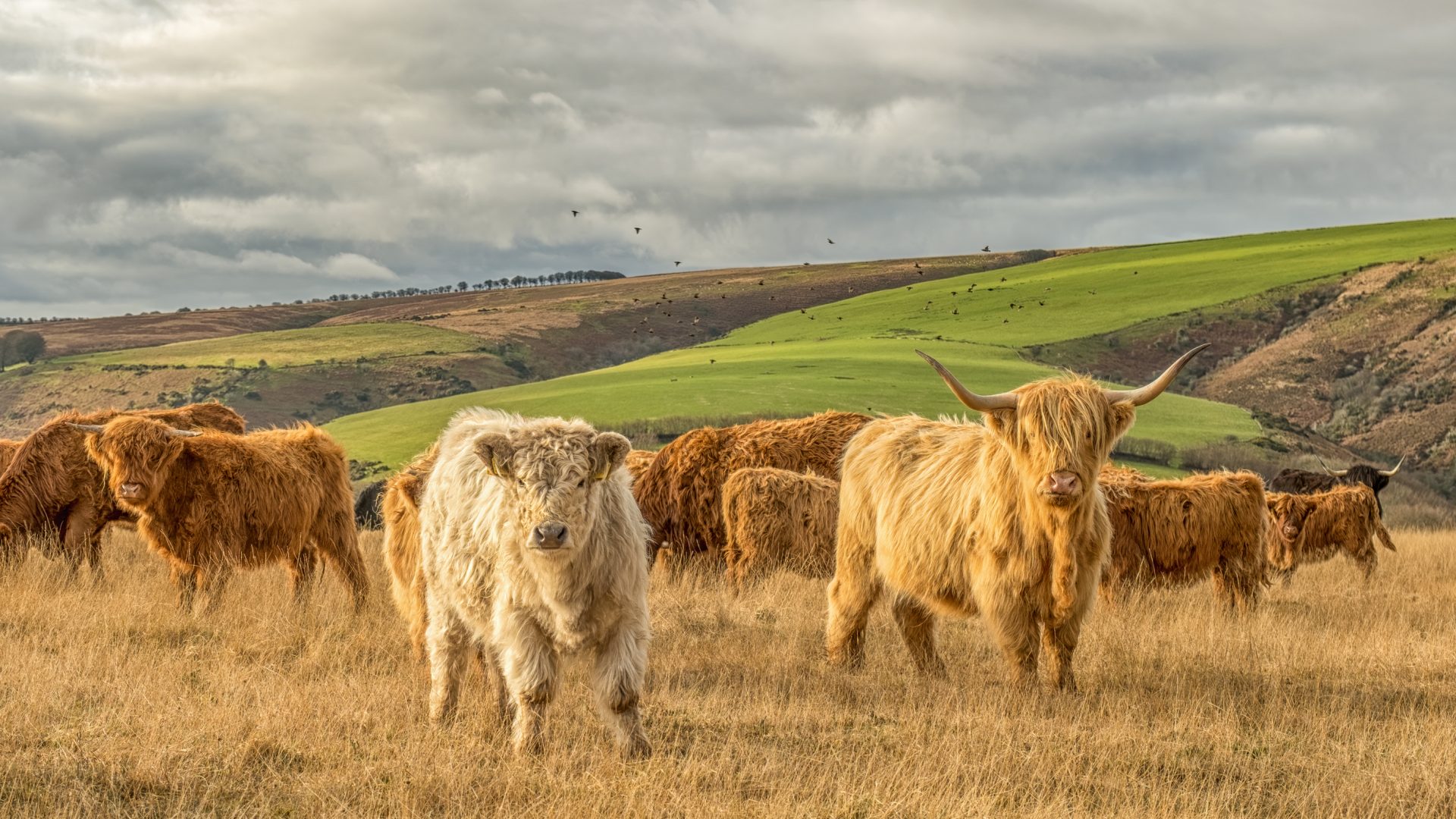
Piggy in the Middle – Nature, Farming, and National Parks
Published: 9 January 2025
One of my new year’s hopes is for a wilder Exmoor. More room for nature and pleasure for people; a beautiful landscape abounding with life, loaded with carbon – but also a landscape that works. And this seems to be where the trouble begins. How can farming sheep and cows be compatible with nature?
The radical end of the environmental movement seems to think that it isn’t, that it would be no great loss if hill farming went. They bandy the statistic, first cited by Henry Dimbleby in the 2021 National Food Strategy, that if we stopped farming on 21% of the least productive land in the country we would only produce 3% less calories. Let the hills, often National Parks, return to nature, and this would help deliver the 30 x 30 commitment that 30% of the land and sea be protected for nature by 2030. DEFRA’s map of areas where this will be achieved suggests this – they neatly overlay protected landscapes. For many upland farmers this is profoundly threatening: there is dark talk of tree planting and rewilding land farmed for centuries. For some, even the idea of nature recovery is seen as a criticism.
But what does ‘protected for nature’ actually mean? Does it mean no farming? No stock, no management? If high levels of biodiversity, carbon storage, and water retention are ‘nature’, these are already present on many Exmoor farms. Hedges are cared for, trees and copses planted, woodland expanded, pasture nurtured, and peatland restored. Farmers are creating rich habitats, carbon stores in their pasture, holding back water and producing high quality meat. But this kind of low intensity upland farming that delivers environmental targets, is piggy in the middle – squeezed by a rewilding agenda on one side and by funding decisions on the other.
Analysis published by the highly regarded Energy and Climate Intelligence Unit (ECIU) in December reveals that hill farmers are only receiving 8%, or £39 million, of the Sustainable Farming Incentive, the government’s new farming support scheme. This despite the uplands occupying 15% of England’s area. It is an imbalance compounded by the continuing delay to the Countryside Stewardship ‘higher tier’ payments that give upland farmers the support to carry out work that will improve nature. Along with the Landscape Recovery – big scale schemes that have also been hit by delays – higher tier payments are what allow farmers to reduce stocking density and make the green transition. The ECIU analysis suggests that unless these schemes become available quickly, Defra will not get sufficient uptake to spend the £1.8 billion that has been earmarked for green farming.
Before Christmas I talked to Ian May, Chair of the Exmoor Hill Farming Network, about how the community were reacting to the daunting combination of changes to inheritance tax, the end of their current BPS payments, the increase in the minimum wage, the freeze on all capital payments – all while the higher level Countryside Stewardship schemes remain unavailable. As someone who has made a significant effort to farm both profitably and environmentally, Ian was deeply pessimistic.
“The potential long-term consequences of each of the changes and postponements from the treasury and DEFRA are very worrying. They seem to be coming from all angles at the moment.
One direct impact I can see is that as environmental support is capped, BPS tails off, and additional income is going to be needed to pay potential inheritance bills, farmers are going to have intensify to survive. This goes against what we’ve been trying to do for a long time.”
At the Exmoor Society our major objective is for a nature rich, beautiful, working landscape – and farmers are part of the ecosystem. It is not a matter of nature or farming, rather nature and farming. With the right support and encouragement, the uplands can deliver the abundant, nature rich life that everyone wants.
